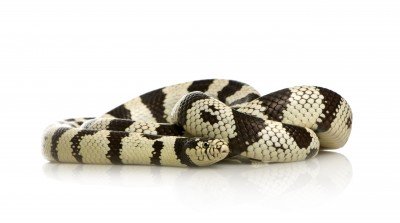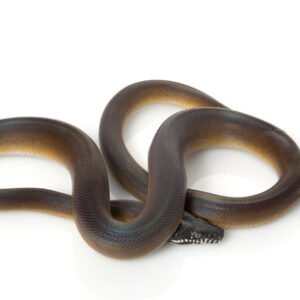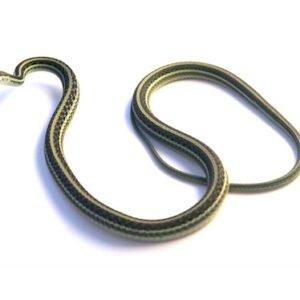Physical Characteristics and Behavior
The California King Snake (Lampropeltis getula californiae) is easily recognized by its striking coloration and distinct patterns. This species exhibits a variety of color morphs, but typically features a striking combination of black and white or cream bands. The coloration can vary significantly among individuals, ranging from solid black to patterns that include yellow or tan. These vibrant patterns not only serve an aesthetic purpose but also provide camouflage in their natural habitats, enabling them to blend into their surroundings.
In terms of size, California King Snakes are medium to large, often reaching lengths of three to four feet, although some individuals may grow even longer. Their robust bodies and unique head shape further contribute to their fascinating appearance. Notably, their non-venomous nature makes them a popular choice for reptile enthusiasts, dispelling common myths that associate them with dangerous snakes.
The behavior of the California King Snake is characterized by its adaptability. Found across various habitats—from deserts to grasslands—these snakes exhibit a remarkable ability to thrive in diverse environments. Their cage-grabbing demeanor is indicative of their active nature, as they often explore their surroundings both in the wild and captivity. Additionally, they exhibit nocturnal tendencies, hunting primarily at night.
The diet of California King Snakes primarily consists of rodents, lizards, and occasionally smaller snakes. Their unique hunting techniques include constriction, which allows them to subdue prey effectively. Social behavior in captivity can vary; while some individuals enjoy the presence of companions, others may prefer solitude. Contrary to popular beliefs, California King Snakes play a critical role in controlling pest populations, underscoring their importance in maintaining ecological balance.
Care and Conservation of California King Snakes
Caring for a California King Snake requires a comprehensive understanding of its specific habitat and lifestyle needs. A suitable enclosure mimicking its natural environment is essential. The habitat should be spacious enough, ideally at least 4 feet long for an adult snake, with secure ventilation. Substrates like aspen shavings or coconut coir work well, providing both comfort and functionality. It’s crucial to incorporate hiding spots using logs or caves, as California King Snakes are naturally secretive creatures. Additionally, these snakes thrive in a temperature range of 75-85°F during the day, with a basking area reaching up to 90°F. Maintaining adequate humidity, around 30-40%, is also vital to prevent shedding issues.
Feeding a California King Snake typically involves a diet of appropriately sized rodents, such as mice or rats, depending on the snake’s size. Young snakes may require feeding once every 5-7 days, while adults can be fed every 10-14 days. Regular health checks are important; signs of distress may include lethargy or refusal to eat, indicating potential health complications. When handling a California King Snake, it is best to do so gently and infrequently during the initial adjustment period, as this helps to minimize stress and fosters trust.
Regarding conservation, the California King Snake is currently not under immediate threat; however, habitat loss due to urban development poses a significant risk. Preserving natural habitats is crucial, as these snakes play an important role in controlling rodent populations. Individuals can contribute to conservation by promoting and participating in local habitat restoration projects and protecting their natural surroundings. Ethical considerations must also be paramount in the pet trade; responsible breeding practices should be encouraged, ensuring that wild populations are not adversely affected. By adopting and caring for captive-bred snakes, pet owners can take part in conservation efforts while enjoying these fascinating reptiles.





